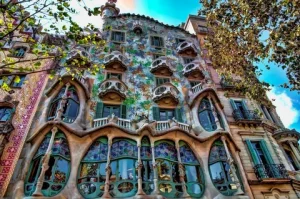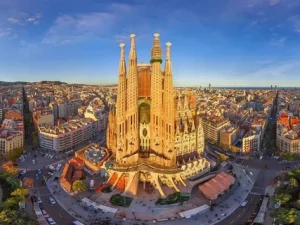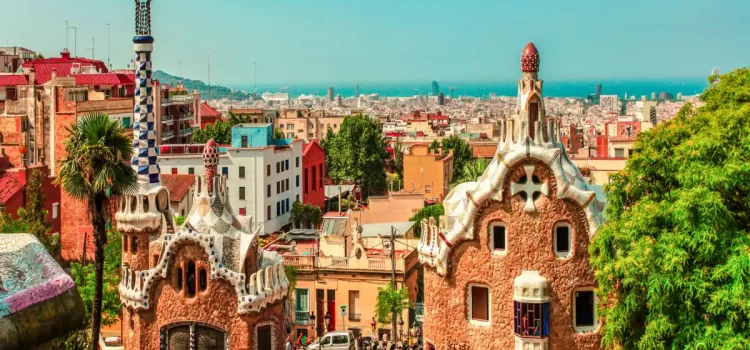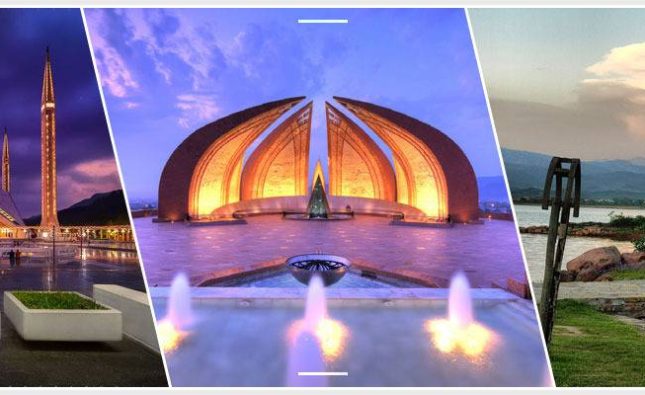
Barcelona, the capital of Catalonia, is a city that seamlessly intertwines historical grandeur with modern innovation. Renowned globally for its architectural marvels and vibrant culture, Barcelona offers a unique blend of artistic heritage and contemporary vibrancy. This article delves into the architectural wonders and cultural richness that define this iconic city.
Exploring the White Villages of the Alpujarra
Nestled in the foothills of the Sierra Nevada mountains, the Alpujarra region is home to a collection of charming white villages known for their traditional architecture, stunning views, and warm hospitality. Take a leisurely stroll through the cobblestone streets, soak in the tranquil atmosphere, and immerse yourself in the rich history of the region.

The Majesty of Madrid
Madrid, the capital of Spain, is a vibrant metropolis known for its rich history, world-class museums, and lively nightlife. From the grandeur of the Royal Palace to the artistic treasures of the Prado Museum, Madrid offers a wealth of experiences for visitors to enjoy.
Admiring Art at the Prado Museum
Art enthusiasts will be in awe of the masterpieces housed within the walls of the Prado Museum. Home to works by Spanish masters such as Velázquez, Goya, and El Greco, the Prado is a must-visit destination for anyone with an appreciation for art and culture.
Architectural Marvels
One cannot discuss Barcelona’s architecture without highlighting the Sagrada Família. Designed by the legendary architect Antoni Gaudí, this basilica is a UNESCO World Heritage Site and stands as an epitome of Gothic and Art Nouveau styles. Despite being under construction since 1882, its intricate facades and towering spires continue to captivate millions of visitors annually.
Park Güell
Another Gaudí masterpiece, Park Güell, showcases the architect’s innovative use of organic forms and vibrant mosaics. Initially intended as a residential project, the park is now a public space that offers panoramic views of the city. Its serpentine bench and the iconic salamander sculpture, “El Drac,” are quintessential examples of Gaudí’s unique aesthetic.
Casa Batlló
Located on the Passeig de Gràcia, Casa Batlló is a remodeled building that epitomizes Gaudí’s distinctive approach to design. Its undulating facade, adorned with colorful ceramics and skeletal balconies, reflects the naturalistic themes that pervade Gaudí’s work. The interior is equally mesmerizing, with flowing lines and organic shapes creating a harmonious living space.
Casa Milà (La Pedrera)
Also designed by Gaudí, Casa Milà, commonly known as La Pedrera, is an architectural marvel characterized by its wavy stone facade and wrought-iron balconies. The building’s rooftop, with its surreal chimneys and ventilation towers, offers a unique perspective on Gaudí’s imaginative vision. La Pedrera is a testament to the architect’s ability to blend functionality with artistic expression.
Gothic Quarter (Barri Gòtic
The Gothic Quarter is the historical heart of Barcelona, where narrow medieval streets lead to hidden squares and ancient buildings. The Barcelona Cathedral, with its impressive Gothic architecture, stands as the centerpiece of this district. Walking through the Gothic Quarter is like stepping back in time, with each corner revealing layers of the city’s rich history.
Palau de la Música Catalana
Designed by Lluís Domènech i Montaner, the Palau de la Música Catalana is a stunning concert hall that exemplifies Catalan Modernisme. Its ornate facade and opulent interior, featuring a stained-glass skylight and intricate mosaics, make it a cultural and architectural gem. The Palau is not only a venue for musical performances but also a symbol of Catalonia’s artistic heritage.
Hospital de Sant Pau
Another work by Domènech i Montaner, the Hospital de Sant Pau, is a sprawling complex that combines functionality with artistic beauty. The hospital’s pavilions, connected by underground passages, are adorned with colorful tiles and sculptures. This UNESCO World Heritage Site is a testament to the idea that architecture can enhance the healing environment.
Torre Glòries (formerly Torre Agbar)
A modern addition to Barcelona’s skyline, Torre Glòries is a cylindrical skyscraper designed by Jean Nouvel. Its illuminated facade, which changes colors, has become an iconic symbol of the city’s contemporary architecture. The tower’s innovative design and sustainable features reflect Barcelona’s commitment to embracing modernity while respecting its architectural heritage.
Vibrant Culture
Barcelona’s cultural calendar is filled with vibrant festivals that celebrate the city’s traditions and heritage. La Mercè, the city’s largest festival, features parades, fireworks, and castellers (human towers), showcasing the communal spirit of Barcelona. The Festes de Gràcia, with its elaborately decorated streets, is another highlight that brings neighborhoods together in a display of creativity and community.
Culinary Scene
Barcelona’s culinary scene is a reflection of its diverse culture. The city’s markets, such as La Boqueria, offer a sensory feast with fresh produce, seafood, and local delicacies. Tapas bars and Michelin-starred restaurants coexist, providing a range of dining experiences that cater to different tastes. Catalan cuisine, with its emphasis on fresh ingredients and bold flavors, is a cornerstone of Barcelona’s cultural identity.
Art and Museums
Barcelona’s art scene is as dynamic as its architecture. The Picasso Museum, housed in medieval palaces, offers an extensive collection of the artist’s works. The Joan Miró Foundation, located on Montjuïc Hill, showcases the surrealist works of the renowned Catalan artist. Additionally, the city’s contemporary art scene thrives in galleries and cultural centers, reflecting Barcelona’s ongoing commitment to artistic innovation.
Music and Nightlife
Barcelona’s vibrant nightlife is an integral part of its culture. From traditional flamenco performances to electronic music festivals, the city’s music scene caters to diverse tastes. The Raval and El Born districts are known for their lively bars and clubs, where locals and visitors alike gather to enjoy the city’s energetic atmosphere. The Gran Teatre del Liceu, one of Europe’s leading opera houses, adds a touch of classical elegance to Barcelona’s musical offerings.
Sports and Recreation
Barcelona’s passion for sports is evident in its world-class facilities and enthusiastic fan base. The Camp Nou stadium, home to FC Barcelona, is a pilgrimage site for football fans. The city’s beaches, parks, and mountains offer ample opportunities for outdoor activities, from sailing and surfing to hiking and cycling. Barcelona’s commitment to promoting a healthy and active lifestyle is a testament to its vibrant culture.
Literature and Film
Barcelona’s literary and cinematic contributions are significant aspects of its cultural landscape. The city has been the setting for numerous novels and films, capturing its unique charm and character. The annual Barcelona International Film Festival and the city’s literary festivals celebrate the creative talents of local and international artists. Barcelona’s bookstores and cinemas are cultural hubs that foster a love for literature and film.
Education and Innovation
Barcelona is a hub for education and innovation, with prestigious universities and research centers contributing to its cultural vibrancy. The city’s commitment to fostering creativity and knowledge is evident in its support for startups and technological advancements. Barcelona’s blend of tradition and innovation creates an environment where cultural and intellectual pursuits thrive.
Community and Diversity
Barcelona’s culture is shaped by its diverse communities and inclusive ethos. The city’s neighborhoods, each with its distinct character, contribute to a rich tapestry of cultural experiences. From the bohemian vibe of Gràcia to the cosmopolitan atmosphere of Eixample, Barcelona’s neighborhoods reflect its multicultural identity. The city’s commitment to social inclusion and cultural exchange is a cornerstone of its vibrant culture.

Conclusion
Barcelona, Spain, is a city where architectural marvels and vibrant culture coexist harmoniously. From the awe-inspiring works of Antoni Gaudí to the lively festivals that bring the city to life, Barcelona offers a unique blend of historical grandeur and contemporary vibrancy. Its architectural landmarks, rich traditions, and dynamic cultural scene make it a destination that captivates and inspires. Whether exploring its iconic buildings or immersing oneself in its diverse cultural offerings, Barcelona is a city that leaves an indelible impression on all who visit.










